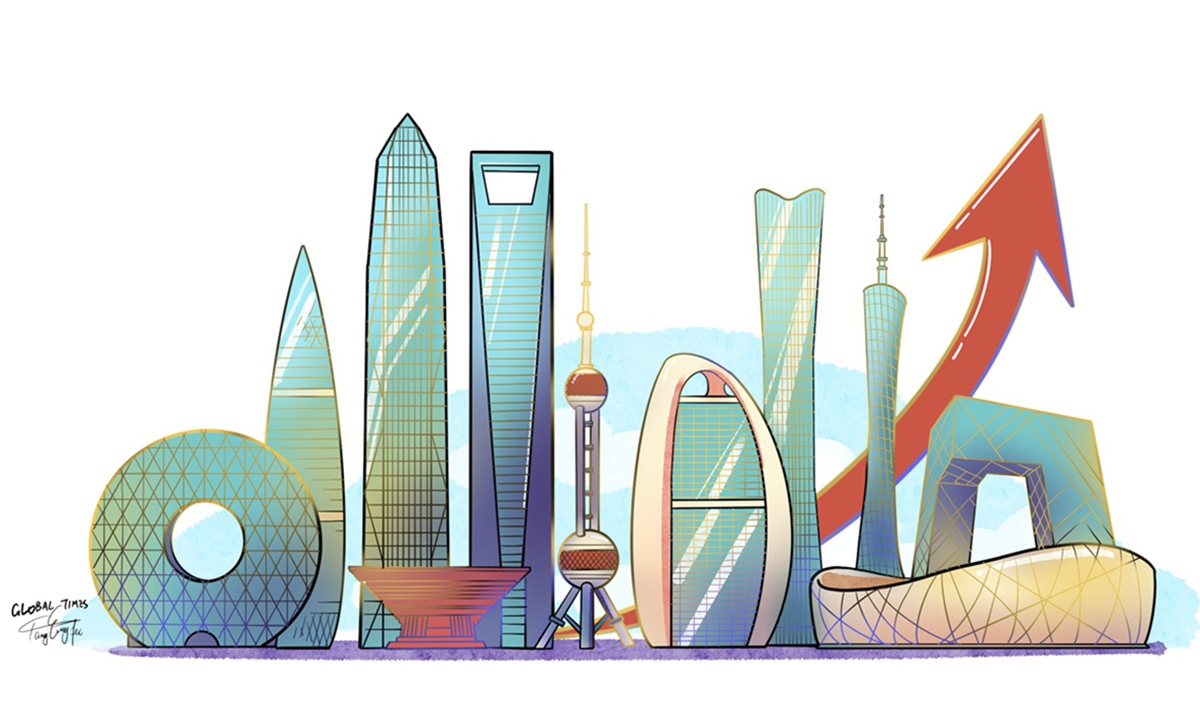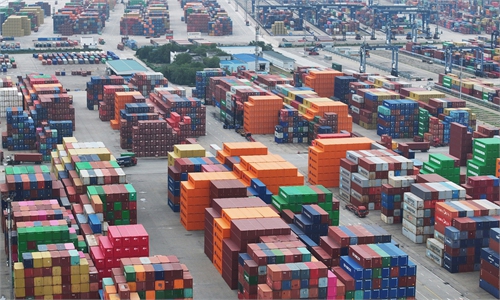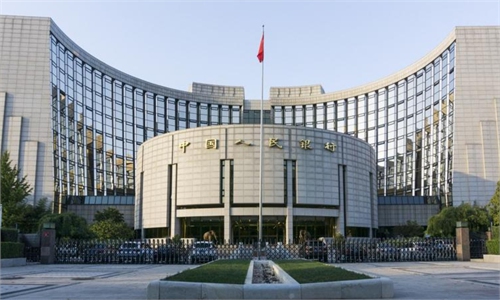
Illustration: Tang Tengfei/Global Times
Data from the National Bureau of Statistics released on Friday showed that China's GDP grew 4.8 percent year on year in the first three quarters of 2024. In particular, in the third quarter, the economy expanded 4.6 percent year on year and went up 0.9 percent on a quarterly basis. Despite a complicated external environment and emerging challenges at home, the Chinese economy has posted a generally stable performance, Sheng Laiyun, deputy head of the NBS, told a press conference Friday. "Positive factors driving a steady economic recovery accumulated and increased in September," Sheng said.
China's economic growth in the third quarter was basically in line with market expectations. While it realized a phased stabilization, it still faces some pressures and challenges. From a global point of view, the world's major developed economies entered the cycle of interest rate cuts one by one, reflecting the global economy's slowdown trend. Moderation in the momentum of the manufacturing sector is more pronounced, which has a certain impact on China's exports.
In addition, on a quarter-by-quarter basis, China's GDP grew 1.5 percent in the third quarter of 2023, which, to some extent, has created a higher base.
From the perspective of full-year economic development, the third quarter's GDP may be a low point of the year, while it is highly likely that the economic growth in the fourth quarter will stabilize and recover. In addition, the announced series of relevant policies may actually be implemented within the fourth quarter, so we should have stronger confidence for the future.
In September, thanks to policy support, the growth rates of industrial production, service sector and consumption rebounded, the growth rate of fixed asset investment stabilized, and the employment situation improved. This shows that in the process of economic transformation and upgrading, both pressure and opportunities will be encountered, and policy support still plays a very important role in the current economic situation.
Overall, the economy is progressing at a steady pace against the backdrop of the pressure brought about by the global economy, which should not be underestimated. With a presidential election around the corner, US political and economic policies may be subject to some uncertainty, casting a shadow over the economies of other countries. And we also need to face up to and actively solve some real problems in the process of transformation and upgrading, be they current or chronic.
Judging from the recent release of a series of incremental policies, the Chinese government is fairly clear about the problems encountered in the current operation of the economy, showing firm intentions to find the right way to achieve goals and solve problems. Practical policies or real subsidies correspond precisely to the key points of boosting domestic demand and stabilizing the housing market, and they do play a role.
The core of the overall policy is shifting from "risk prevention" to "risk reduction." "Risk prevention" is still important. Over the past four decades of rapid economic development in China, there have been many successful experiences, but some risks have also been accumulated. The exposure of some risk points is also inevitable. Thus, "risk prevention" policies have been launched continuously, which aims to check and mend the deficiencies of various sectors, industries and regions as well as to correct mistakes.
At the same time, "risk prevention" must also face three facts: first, some risks have been formed for a long time. Although new risk points have been eliminated in recent years, the existence of inherent risks still requires a series of solutions.
Second, in the upward economic cycle, some risk points will be submerged or dissolved in economic growth. But when global politics and the economy are facing greater pressure, the market itself has a much lower capacity to resolve the potential threats. As a result, those risk points are more likely to erupt or even trigger a chain reaction.
Third, "risk prevention" policies tend to favor austerity, while in a conversion period, loose and expansionary policies are more needed. Therefore, "risk prevention" is long-term work, but the current focus on "risk reduction" can better solve the real problem and prevent past risks from triggering new ones. It can also boost the market's confidence and better utilize the effect of "counter-cyclical adjustments."
The Chinese economy in the third quarter of 2024 can be regarded as stabilizing at a low level, maintaining a smooth feedback mechanism for market information and decision-making mechanisms. With further reinforcement of the policy package to ensure continuity, systematization and implementation of policies, we have full confidence in China's economy and future.
The author is a professor and economist at Beijing Normal University. opinion@globaltimes.com.cn


